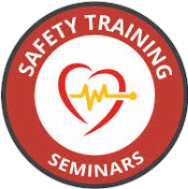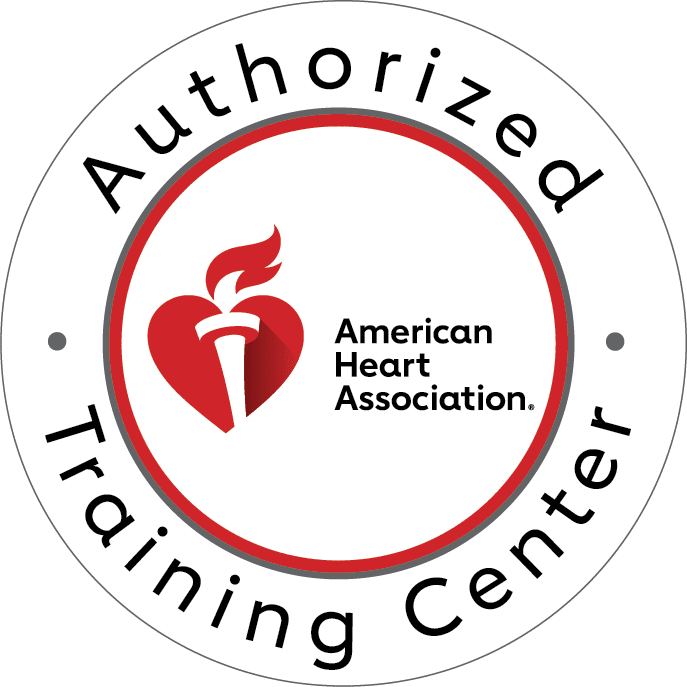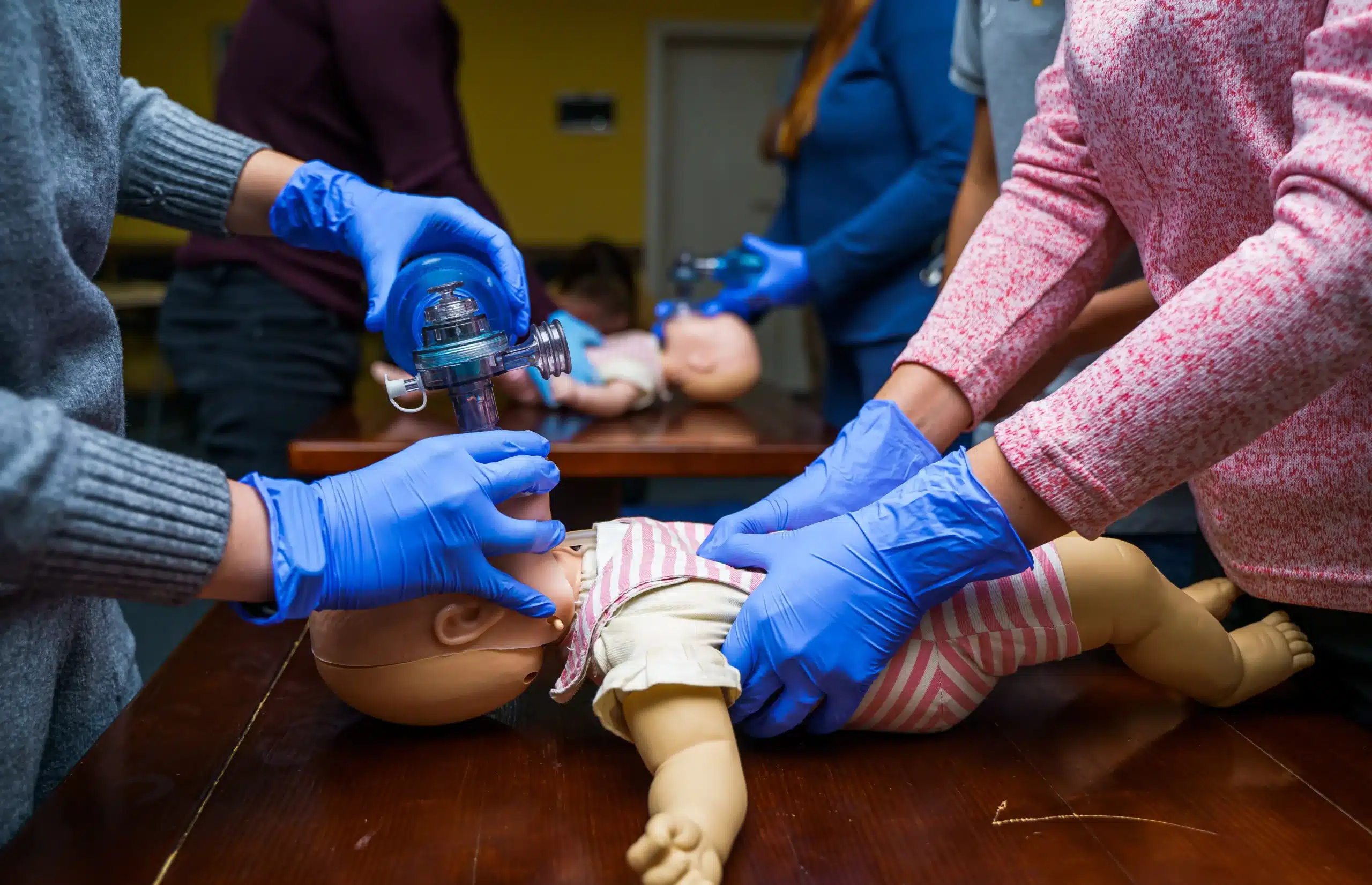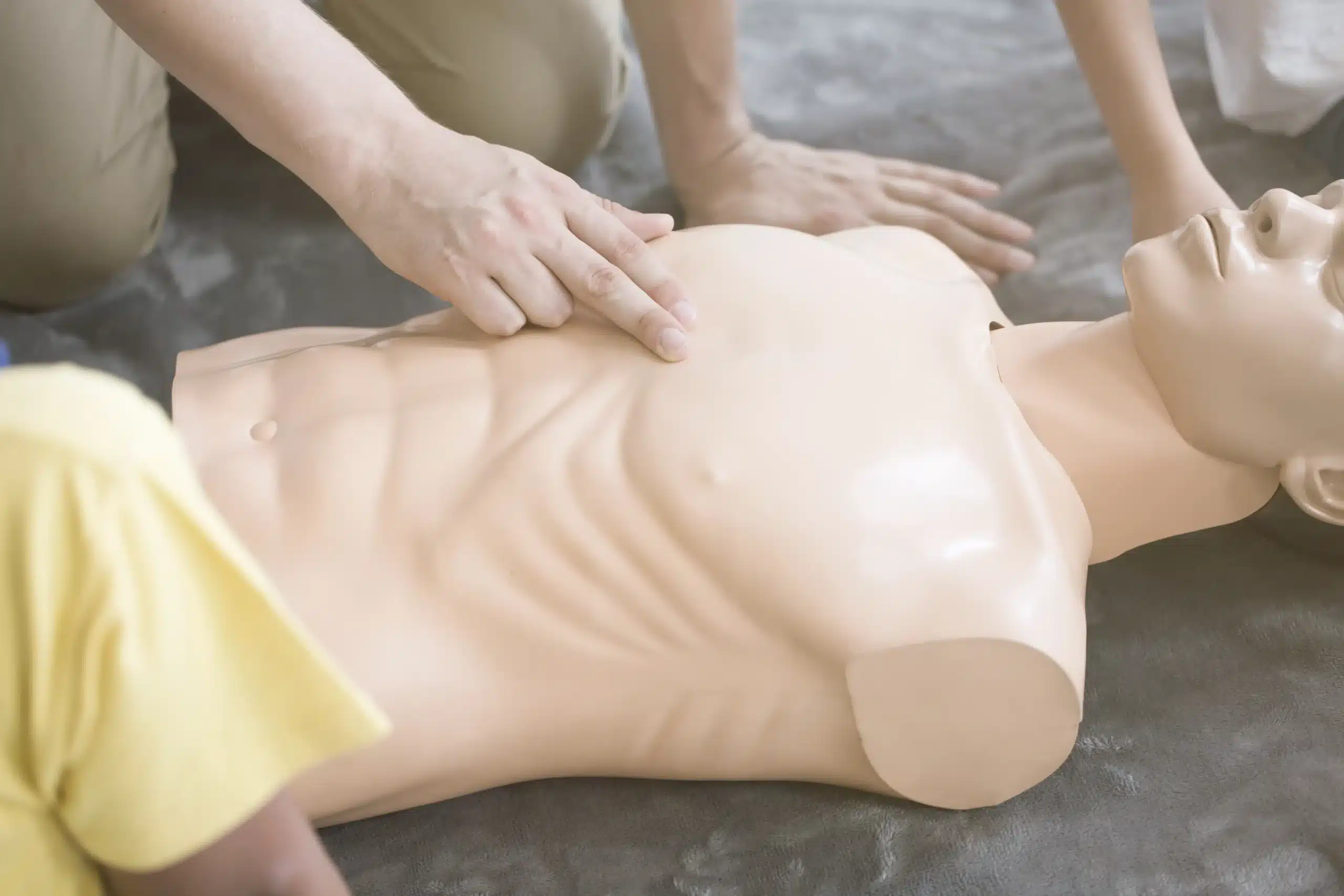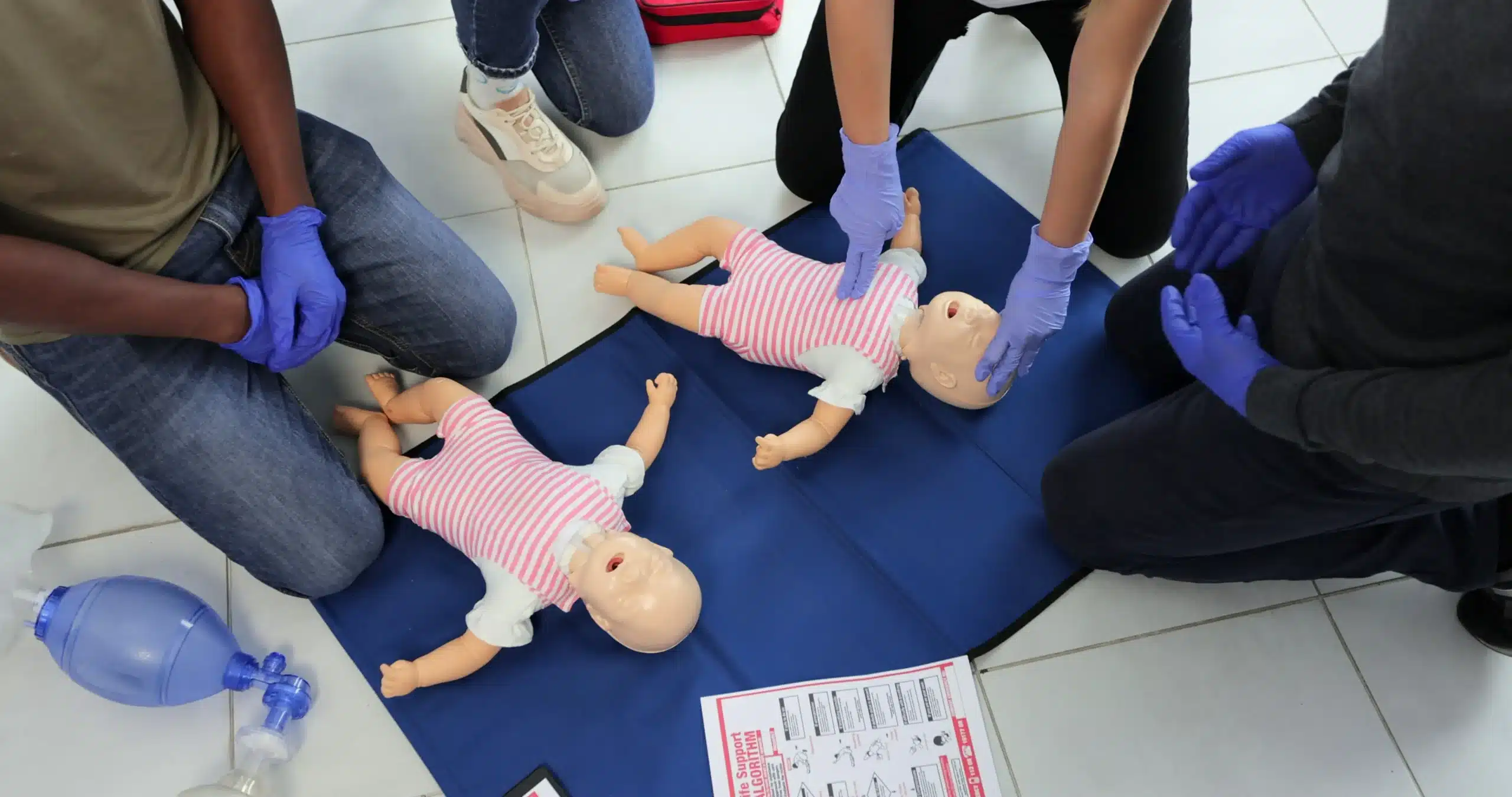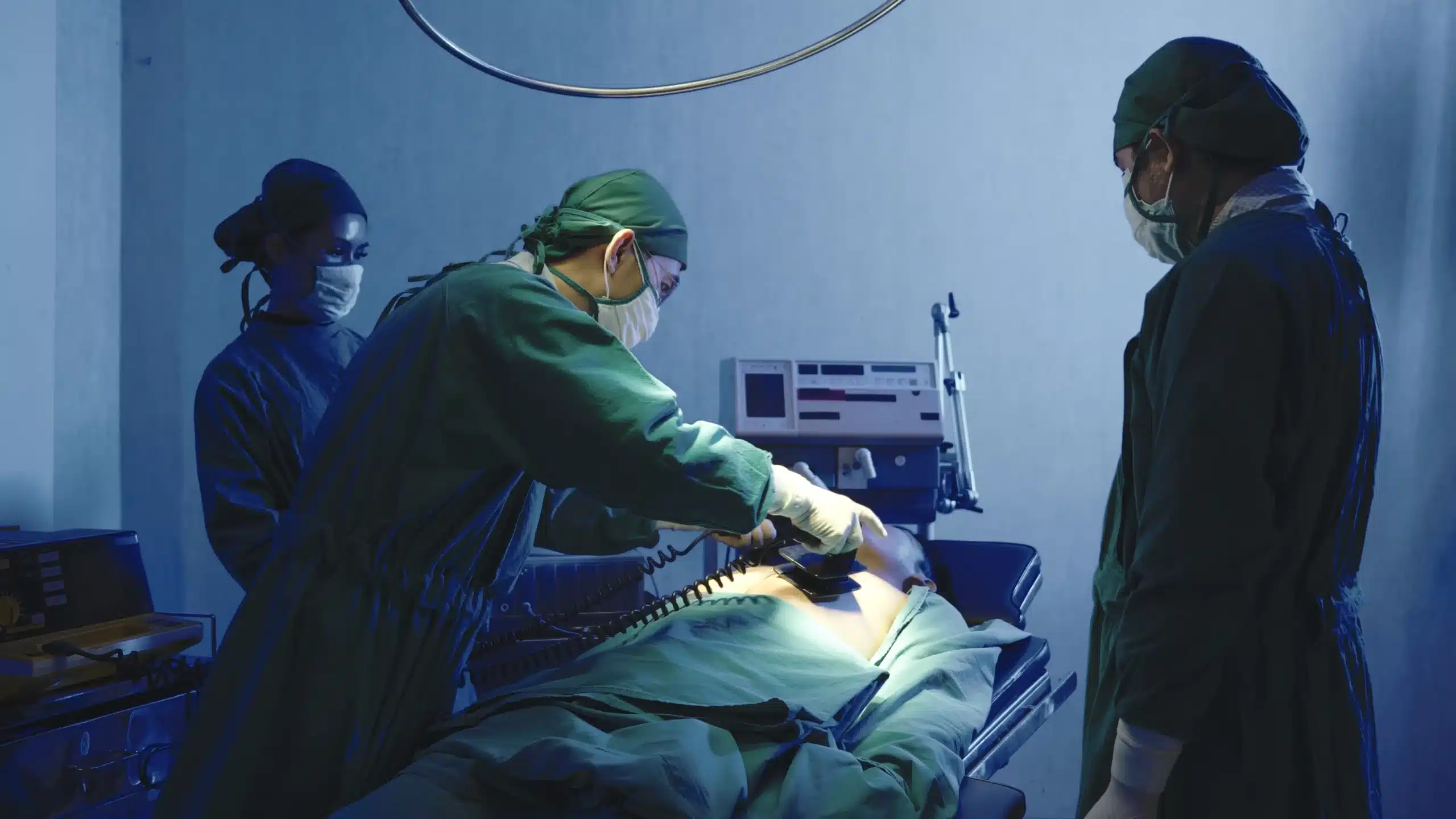Empowering yourself with life-saving skills has never been easier, thanks to the availability of free CPR classes. This article serves as your roadmap to finding and maximizing these valuable resources. We’ll cover everything from locating free CPR classes in your area to understanding the core skills taught in these courses. We’ll also address common misconceptions about free CPR training and discuss the differences between free and certified options. Whether you’re looking to gain basic CPR knowledge or enhance your existing skills, this guide will provide you with the information and resources you need to confidently respond to emergencies.
Key Takeaways
- Free CPR classes provide a solid foundation: Learn essential life-saving techniques, including CPR for adults, children, and infants, along with AED basics and first aid principles. These classes are a great starting point, even if you don’t need certification.
- Certification validates your skills: For professional requirements or a deeper understanding, certified CPR training offers a recognized credential. These courses provide hands-on practice and assessment to ensure you meet established standards.
- Active learning is key: Regardless of your chosen path, regular practice and supplemental resources are crucial for maintaining your skills and confidence. Consider certified training for advanced techniques and a more comprehensive understanding.
What Are Free CPR Classes?
Free CPR classes are a valuable community resource, equipping people with the skills to respond to emergencies. These classes, often run by local fire departments, government agencies, and non-profit organizations like the Red Cross, make learning CPR accessible to almost everyone. They’re a crucial first step in building confidence and competence in life-saving techniques.
For example, Anne Arundel County offers free CPR and Stop the Bleed training through their Fire Department. These classes cover various CPR and first aid levels, preparing participants for diverse emergency situations. Registration is typically required, ensuring a structured learning environment. Similarly, Howard County provides free CPR training, though it’s worth noting these classes don’t offer certification cards. If you need official certification for your job or volunteer work, look into classes from nationally recognized organizations like the American Red Cross or the American Heart Association. Finally, some organizations, like AED CPR, offer entirely free online CPR and First Aid classes. This online format lets you learn at your own speed, making these vital skills even more convenient to acquire. Free CPR classes empower individuals to act quickly and effectively during emergencies, potentially saving lives and making a real difference in their communities.
Free vs. Certified CPR Training: What’s the Difference?
So, you’re interested in learning CPR—fantastic! It’s a truly empowering skill. You might have seen both free and paid CPR training and wondered about the key differences. Let’s break down what each offers.
Free CPR classes, often found online through providers like AED CPR, offer a convenient way to learn the basics. These courses cover essential techniques and are a great starting point if you want a foundational understanding of CPR without a financial commitment. However, free courses typically don’t offer a certification card. Think of them as a valuable introduction to life-saving skills.
Certified CPR training goes a step further. Organizations like the American Red Cross and the American Heart Association offer programs that include hands-on skill assessments and lead to official CPR certification. This certification is often required for certain professions, like healthcare providers and childcare workers. It demonstrates that you’ve met a recognized standard of competency. Certified training usually involves online and in-person components, allowing you to learn the theory and practice your skills with qualified instructors. This in-person element is essential for mastering proper techniques and gaining confidence. Remember that certifications typically expire after two years, so staying current with your skills through recertification is crucial.
If you’re looking for certified CPR training in Alameda County, check out the courses offered by Safety Training Seminars. They provide a range of American Heart Association-certified courses, including BLS, ACLS, and PALS. They even offer a low-price guarantee!
Both free and certified CPR training have their place. Free courses are a great way to get familiar with CPR, while certified training provides the official credentials and in-depth instruction needed for many professional fields. Consider your personal and professional goals when deciding which path is right for you.
Who Benefits from Free CPR Classes?
Free CPR classes offer a fantastic opportunity to learn life-saving skills, and their benefits extend to a wide range of people. From stay-at-home parents and grandparents to teachers, coaches, and office workers—anyone can benefit from CPR training. These classes empower individuals to act confidently and effectively if they encounter a situation where someone needs CPR. This sense of community empowerment creates a network of people ready to respond, ultimately benefiting everyone.
Free CPR training also plays a crucial role in promoting inclusivity. By offering these classes at no cost, they become accessible to a broader range of people, including those who may not be able to afford traditional CPR certification. Inclusive CPR programs ensure that diverse communities have the knowledge and skills to respond effectively in emergencies. This wider reach means more people are trained and ready to perform CPR, leading to quicker responses and potentially saving more lives. Increased public participation in bystander CPR is essential for safer communities.
One of the biggest hurdles free CPR classes overcome is the misconception that only medical professionals can perform CPR. Debunking this myth encourages anyone to learn and use these skills, regardless of their background. Ultimately, free CPR classes benefit not only the individuals who take them but also the community as a whole, creating a safer environment for everyone.
Essential Skills Taught in Free CPR Classes
Free CPR classes equip you with fundamental life-saving skills to respond effectively in medical emergencies. While the depth of instruction might vary, these classes typically cover core techniques applicable to various situations. Let’s explore some key areas you can expect to learn.
Adult CPR Techniques
CPR for adults focuses on chest compressions and rescue breaths. You’ll learn how to assess an unresponsive adult, check for a pulse, and perform chest compressions at the correct rate and depth. Instruction on opening the airway and delivering rescue breaths is also a crucial part of adult CPR training. Importantly, CPR itself doesn’t demand extensive medical knowledge, making it accessible to everyone. While a defibrillator can improve survival odds, it isn’t essential for performing CPR. For more information on CPR and first-aid certification, visit the Safety Training Seminars website.
Child and Infant CPR
CPR techniques differ for children and infants due to their smaller size and delicate physiology. Free CPR classes often cover these variations, teaching you how to adapt your approach based on the age of the individual needing assistance. You’ll learn the appropriate compression depth and rate for both children and infants, as well as how to deliver rescue breaths safely and effectively. This comprehensive approach ensures you’re prepared to handle emergencies involving people of all ages. For further details on child and infant CPR, explore additional CPR resources.
AED Usage Basics
Automated External Defibrillators (AEDs) are life-saving devices that can restore a normal heart rhythm during cardiac arrest. Free CPR classes often include basic AED training, guiding you through the steps of using these devices safely and correctly. You’ll learn how to assess the situation, prepare the AED, apply the pads, and follow the device’s prompts. Understanding AED operation can significantly increase the chances of survival in cardiac arrest situations.
First Aid Fundamentals
Beyond CPR, many free CPR classes incorporate basic first-aid principles. This might include instruction on handling common injuries like cuts, burns, and sprains. You might also learn how to manage choking incidents or allergic reactions. These fundamental first-aid skills complement CPR training, providing a broader foundation for responding to various medical emergencies.
Find and Register for Free CPR Classes Near You
Knowing where to find free CPR training can be tricky. This section breaks down how to find both free online resources and in-person training opportunities in your community.
Online Resources and Platforms
Free online CPR resources are a great way to learn the basics. AED CPR offers a range of free online courses, including CPR/AED, Healthcare Provider BLS, a combined CPR/AED/First Aid course, and standalone First Aid and Bloodborne Pathogens training. These courses require no credit card and there’s no payment obligation. For a more focused approach, Howard County provides free online CPR training videos covering adult, child, and infant CPR, as well as choking relief techniques. These videos are a convenient way to learn at your own pace.
Local Organizations to Contact
Many local organizations offer free in-person CPR classes. Check with your local Fire Department, community centers, and hospitals. Anne Arundel County, for example, offers free CPR and Stop the Bleed classes taught by the Fire Department. These classes require registration, so be sure to check their website for schedules and sign-up information. For group training, consider contacting your local organizations directly. In Howard County, you can request group classes through their online form. This is a great option for businesses, community groups, or families who want to learn together.
Community Event Calendars
Keep an eye on your community calendars! Local events and health fairs often feature free CPR training sessions. These events are a great opportunity to learn CPR in a relaxed, community-focused setting. You can often find these events listed on your city or county website, local news outlets, or community center bulletin boards. For online resources, check out the free courses available through AED CPR. You can also find helpful videos on the Howard County website.
Debunking Free CPR Class Myths
Free CPR classes offer a fantastic introduction to life-saving techniques. However, it’s important to understand their limitations. Let’s clear up some common misconceptions surrounding free CPR training.
Quality of Training
One frequent myth is that any CPR training is sufficient. While free classes cover the basics, they may not offer the same depth as a certified course, especially regarding the latest guidelines. Plus, techniques evolve, so even if you’ve learned CPR before, a refresher is always a good idea. As the Healthcare Guys explain, many people mistakenly believe prior CPR training eliminates the need for more instruction.
Certification Availability
Free CPR classes typically don’t offer certification. This is a key difference from paid courses like those offering American Heart Association certification. While the skills you learn in a free class are valuable, certification provides a standardized measure of proficiency, often required for jobs or volunteer positions.
Online vs. In-Person Training
With the rise of online resources comes the misconception that online CPR training is just as effective as in-person instruction. Online resources can be helpful supplements, but they can’t replace hands-on practice. The Australian Training Institute highlights the importance of in-person training for truly mastering CPR. Physical practice and instructor feedback are essential for developing the muscle memory and confidence you need in a real emergency.
Expired Certification Concerns
This myth applies more to certified training. CPR certifications expire because guidelines and best practices change. An expired certification could mean you’re not using the most effective techniques. Reeves Training addresses another misconception: that CPR alone can always revive someone. CPR is crucial for maintaining blood flow until medical professionals arrive, but it’s not a guaranteed solution. This reinforces the importance of immediately calling 911 in any emergency.
Prepare for Your Free CPR Class
Getting ready for a free CPR class is easier than you think. These classes are designed to be accessible and inclusive, welcoming people from all walks of life. Whether you’re a parent, teacher, or simply someone who wants to learn a life-saving skill, free CPR training is a valuable opportunity. One common misconception is that prior experience eliminates the need for refresher courses. This isn’t true! Regular training ensures your skills are sharp and up-to-date. CPR refresher training reinforces best practices and addresses any guideline changes. So, even if you’ve taken a class before, consider this a chance to hone your abilities.
Before attending, think about what you want to achieve. Are you looking for a basic understanding of CPR or aiming for more confidence in emergencies? Free CPR training focuses on essential techniques, giving you a solid foundation. You’ll learn how to perform chest compressions, rescue breaths, and use an AED. Many classes also cover basic first aid. Knowing this beforehand helps you focus during the session. Hands-on practice with training mannequins is a key part of these classes, so be prepared to actively participate. This practical experience builds muscle memory and confidence, preparing you to react effectively in a real emergency. Remember, inclusive CPR programs empower diverse communities, so expect a welcoming and supportive learning environment. By understanding the basics and embracing hands-on learning, you’ll gain the most from your free CPR class. Public participation in CPR is crucial for safer communities, and your participation contributes to this vital effort.
Free CPR Classes and Community Safety
Free CPR classes are a cornerstone of a safe and prepared community. They empower individuals, boost emergency response effectiveness, and create stronger community bonds. By offering these life-saving skills free of charge, we cultivate a more resilient and supportive environment for everyone.
Empowering Individuals
Free CPR classes equip individuals with the confidence and skills to act decisively during emergencies. They transform bystanders into potential lifesavers, ready to assist loved ones or even strangers when seconds count. This sense of empowerment is invaluable, knowing you can make a real difference in a critical situation. Promoting CPR training creates a community of people ready to respond effectively in emergencies, fostering a culture of preparedness. This proactive approach to safety benefits everyone. Learn more about how CPR training initiatives build stronger, safer communities.
Improving Emergency Response Rates
Widespread CPR knowledge significantly improves a community’s emergency response capabilities. The minutes before professional help arrives are often the most critical in a medical emergency. Bystander CPR can dramatically increase survival rates, especially in cases of cardiac arrest. Free CPR classes enable more people to provide immediate assistance, bridging the gap and potentially saving lives. Learn how you can participate in bystander CPR and contribute to a safer community.
Building Community Connections
Free CPR classes also foster a stronger sense of community. They bring people together with a shared purpose: learning to save lives. These classes create opportunities for neighbors to connect, build trust, and support each other. This shared experience strengthens community bonds and cultivates a culture of mutual care. Creating a community of lifesavers involves a multifaceted approach that combines education, accessibility, and awareness, ensuring these vital skills are available to everyone. Explore how CPR training strengthens community connections and builds more resilient communities.
Get the Most Out of Free CPR Training
Free CPR classes offer a fantastic introduction to life-saving skills, but taking a few extra steps can significantly enhance your learning and preparedness. Here’s how to maximize the benefits of free CPR training:
Practice Techniques
Hands-on practice is key to mastering CPR. In a hands-on class, you’ll use a CPR training mannequin to learn exactly where and how hard you need to press to provide effective chest compressions. Repetition builds muscle memory, so continue practicing the techniques you learned in your free class. Consider asking a friend or family member to practice with you, verbally guiding each other through the steps. This reinforces the sequence and helps build confidence. For additional guidance, refer to the American Heart Association’s resources on CPR.
Supplementary Online Resources
Free online resources can supplement your in-person training. Many organizations offer free CPR guides and videos demonstrating proper techniques. Some developers even create user-friendly mobile apps that guide bystanders through the steps of CPR. These resources offer convenient refreshers and can help you stay up-to-date on the latest CPR guidelines.
Transitioning to Certified Training
While free CPR training provides valuable foundational knowledge, it’s important to recognize its limitations. Free courses may not offer the same depth of instruction or hands-on practice as a certified CPR course. Formal certification provides a recognized credential, demonstrating your competency to employers, organizations, and communities. Consider certified training the next step in your life-saving journey. It offers a more comprehensive curriculum, including advanced techniques and scenarios, ultimately equipping you with the confidence and skills to respond effectively in real-life emergencies. Check with your local American Heart Association Training Center for upcoming classes. Safety Training Seminars offers a variety of certified CPR courses to help you gain these essential skills. Contact us today to learn more.
Sign Up for a Free CPR Class Today
Learning CPR can be a rewarding experience, and free CPR classes are a great place to start. They provide a foundation in life-saving techniques, build your confidence in emergencies, and contribute to a safer community.
Life-Saving Skills
CPR is a powerful skill that prepares you to respond effectively during cardiac emergencies. Free CPR classes teach essential techniques to help someone in need, including recognizing the signs of cardiac arrest, performing chest compressions, and giving rescue breaths. CPR Guardians explains that CPR is a life-saving skill everyone should learn, from family members to community members. This knowledge can dramatically improve the outcome of a medical crisis. Learn more from CPR Guardian’s insights on common CPR myths.
Increased Confidence in Emergencies
One of the most significant benefits of free CPR training is increased confidence. Knowing how to react in a medical emergency can be truly empowering. Instead of feeling helpless, you’ll have the skills and assurance to take action. This confidence goes beyond simply knowing the technical aspects of CPR. The CPR Guardians article points out that understanding CPR dispels common myths, allowing you to act quickly and decisively when it matters most.
Contributing to Community Safety
Free CPR classes are vital for safer communities. By empowering individuals with these skills, we increase the number of people ready to respond to medical emergencies. MyCPR NOW highlights the importance of promoting CPR training and creating a community of lifesavers in their article on building such communities. When more people know CPR, it improves emergency response times and strengthens community bonds. MyCPR NOW also offers advice on encouraging public participation in bystander CPR. Consider signing up for a free CPR class today—it’s a step towards protecting yourself, your loved ones, and your community. Contact Safety Training Seminars to learn more about our CPR and first-aid certification courses.
Related Articles
- Why CPR is Essential for Saving Lives
- CPR Certification in Alameda: Your Comprehensive Guide – Alameda CPR Classes
- CPR Training in Oakland: Your Guide to Certification – Alameda CPR Classes
- Online CPR Classes in Berkeley: Your Complete Guide – Alameda CPR Classes
- Group CPR Discount Classes and Courses in Alameda, CA
Frequently Asked Questions
Are free CPR classes worth my time if they don’t offer certification?
Absolutely! Free CPR classes provide a solid foundation in essential life-saving techniques. They’re a great starting point if you’re looking for an introduction to CPR or want a refresher course. While they may not offer official certification, the skills you learn are invaluable and can empower you to act confidently in an emergency.
How do free online CPR classes compare to in-person training?
Online CPR classes offer a convenient way to learn at your own pace, but they often lack the hands-on practice crucial for mastering CPR techniques. In-person classes provide the opportunity to practice on mannequins and receive feedback from instructors, which is essential for building muscle memory and confidence.
If I’ve taken a CPR class before, do I really need another one?
CPR guidelines and best practices can change, so even if you’ve learned CPR in the past, periodic refreshers are highly recommended. A refresher course ensures you’re up-to-date on the latest techniques and helps maintain your skills and confidence.
Where can I find free CPR classes in my area?
Check with your local fire department, community centers, hospitals, and Red Cross chapters. Many of these organizations offer free CPR training to the public. You can also search online for free CPR classes offered in your community.
What’s the difference between CPR and First Aid training?
CPR focuses specifically on life-saving techniques for cardiac emergencies, such as chest compressions and rescue breaths. First Aid covers a broader range of medical situations, including injuries like cuts, burns, and sprains. Many free CPR classes also incorporate basic First Aid principles, providing a more well-rounded skillset for responding to emergencies.
